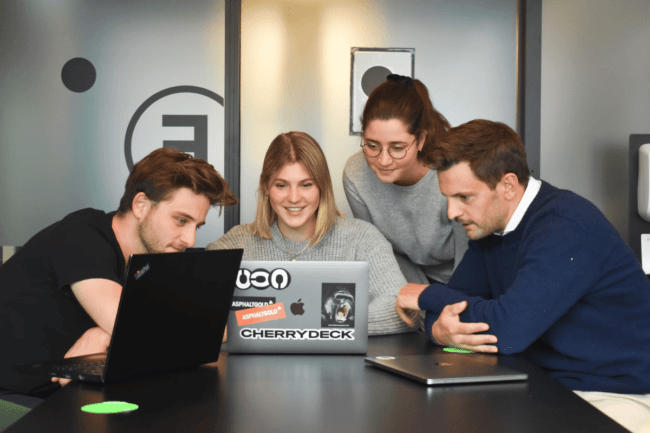In today’s dynamic business landscape, agencies constantly seek ways to enhance their agency processes and boost their overall performance. No wonder the quest for enhancement has given rise to expert insights and strategies to improve agency processes and performance.
You must successfully adapt, innovate, and optimize your internal workflows to achieve this.
Suppose you’re a seasoned agency owner looking to fine-tune your established processes or a newcomer seeking guidance on building a solid foundation. The following tips should offer valuable insights and actionable recommendations in helping achieve enhanced agency processes and performance.
Key Elements of Successful Agency Processes
Successful agency processes are built upon several critical elements for you to deliver high-quality services and achieve client satisfaction successfully. You need to establish and maintain a structured framework incorporating several vital components.
This is why we will discuss more elements below to help you understand their role in the marketing agency process.
Set goals and objectives
First and foremost, setting clear and measurable goals is the foundation of any successful agency process. These goals should be specific, measurable, attainable, relevant, and time-bound (SMART).
By setting these goals, your agency will have a roadmap that can provide direction, help motivate teams, and measure their progress toward achieving desired outcomes. Some of what you can accomplish when having well-defined goals are increased revenue, improved client satisfaction, or even expansion of market share.
Identify and prioritize tasks
Once your agency’s goals and objectives are established, you should also be able to identify and prioritize the tasks required to achieve them.
Prioritizing tasks will ensure that your agency’s resources are allocated to the most critical activities, enabling employees to focus on what matters.
You must first break down larger goals into smaller and manageable tasks to do this. You can also apply a few techniques that you can get from our programs to determine the urgency and importance of tasks.
Establish clear roles and responsibilities
Each team member must know their role and what is expected of them. You should also consider delineating organizational roles and responsibilities if you want a successful agency process.
Clarifying roles and tasks helps minimize confusion, avoid duplication of efforts, and foster a culture of accountability. If necessary, you can create minor restructuring of each team, especially if you have a big agency.
On the other hand, it will also help if your agency has specific role descriptions and job responsibilities that are well-documented and regularly reviewed to adapt to evolving agency needs.
Implement effective communication strategies
Effective communication is essential to establish clear lines of communication internally and with clients. Regular team meetings, status updates, and project reviews keep everyone informed and aligned with the agency’s objectives.
Developing strong communication strategies with clients is also a great way to manage your digital agency process workflow. Doing this will help guarantee transparency, build trust, and manage expectations while working on a project.
Utilize technology and automation tools
Utilizing technology and automation is critical in streamlining your digital marketing agency’s workflow. Investing in appropriate tools and software can help simplify tasks, improve the team’s efficiency, and reduce the likelihood of output errors.
Some tools and software worth investing in since they will be helpful for your agency are project management software, CRM systems, marketing automation platforms, and analytics tools.
Leveraging technology enhances productivity and allows for data-driven decision-making, a crucial factor in strengthening the agency process.
How to Build Optimal Agency Processes
If you ask an expert in the business, they will emphasize that having an optimal process is key to growing your digital marketing agency. So, how do you implement and maximize your agency’s effectiveness?
Below, we will share a comprehensive step-by-step process for building an optimal agency process.
Step 1: Assessment and analysis of current processes
When building a great process for your agency, you should start by looking at how your agency gets work done and pinpointing where you’re falling short.
Some things that your assessment and analysis of the agency’s process should involve the following:
- Identifying all the tasks, steps, and activities involved in various projects and operations.
- Documentation of your current workflows.
- Gather data on performance metrics and seek feedback from team members and clients.
- Analyzing the strengths and weaknesses of your agency processes.
Step 2: Identify areas for improvement and define goals
After the assessment, you can now determine the areas where improvements are needed. You can consider evaluating clients’ satisfaction, project completion time, and the quality of deliverables.
Afterward, define specific goals and objectives that address these areas, ensuring they are measurable and align with your agency’s mission and strategic direction. You can then tailor your plan to these specific uses from here and move to the next step.
Step 3: Develop a systematic workflow and timeline
The third step to building an optimal agency process is to have a systematic workflow outlining the revised processes, including task sequences, responsibilities, and dependencies.
Your digital marketing workflow should be designed to achieve the defined goals and improve efficiency. You can use flowcharts, diagrams, or project management software to visualize and document the new processes.
When doing these, we suggest you set clear milestones and deadlines to keep the project on track and ensure all team members understand the unique workflow and their roles.
Enrolling in programs or training courses that help you develop a systematic workflow is also great.
Step 4: Implement changes and monitor progress
Every process should include the execution of all changes and monitoring of the transition from the old approach to the new one. As the new processes are implemented, you should communicate these changes to the team, providing training and support as needed.
To help you track and monitor the progress, you should:
- Track key performance indicators (KPIs) and metrics related to your goals.
- Gather feedback from team members and clients to gauge the impact of the changes.
- Address any issues or roadblocks promptly to set a smooth transition.
Step 5: Continual evaluation and adjustment
Building optimal agency processes is ongoing, so continuous evaluation and adjustment are necessary. Regular assessments and reviews of the performance of the revised workflows are needed to assess whether the goals are being met and if there are additional areas for improvement.
During this stage, learn to be open to adjustments and refinements as needed. You should also fine-tune processes, reallocate resources, or incorporate new technologies and tools to enhance efficiency.
We encourage you to include a culture of continuous improvement within your agency, where feedback and ideas for process enhancement are actively sought and valued.
Creating Efficient Communication Channels
Creating efficient communication channels within your agency process ensures teams collaborate effectively, stay informed, and deliver high-quality work.
Below are some strategies that can help establish efficient communication channels.
Effective internal communication strategies
An effective internal communication strategy with team members is a significant factor in an efficient communication channel. To achieve this, you can implement several key strategies:
- Prioritize transparent communication: You should confirm that information within the team is conveyed concisely and transparently. Email, instant messaging, and in-person meetings can help create transparent communication.
- Establish defined communication protocols and guidelines: Determine when and how various types of information should be shared. Regular updates from team members on their progress and challenges are also essential, as they keep everyone informed and enable swift problem-solving.
- Create a culture of feedback: Actively seeking input from your team members improves communication and aids in process improvement.
- Develop conflict resolution protocols: You should address conflicts that may arise due to miscommunication or misunderstandings since it will ultimately prevent them from escalating.
How to leverage project management tools
Project Management Tools play a big part in creating efficient communication channels for your agency’s processes and operations. Such tools provide a range of benefits that will contribute to a smoother workflow.
Centralized collaboration platforms like Asana or Trello can serve as a hub for project information, tasks, and timelines. The centralization streamlined collaboration enables your team members to monitor project progress, delegate tasks, and track work all in one place.
When managing a digital agency, we suggest employing cloud-based file-sharing platforms. Sharing platforms can be reliable because they assure all team members of your agency have access to the most up-to-date documents and resources. It can also be shared with clients when dealing with projects.
Those mentioned above are just some project management tools you can leverage to create an efficient communication channel among your team members.
The importance of regular team meetings
Having regular team meetings is an integral component of a well-functioning agency. It serves multiple crucial purposes, including providing a structured platform for team members.
During meetings, members of the agency have the chance to convene, whether they occur on a daily or weekly basis. These gatherings help you discuss project updates, essential information, and potential roadblocks.
Aside from regular team meetings, client meetings, where applicable, are another crucial aspect of creating an efficient communication process within the agency. Regular client meetings allow agencies to inform clients about project progress, address their concerns, and effectively manage expectations.
Challenges and Solutions in Implementing Processes
A wide array of challenges arise when working with a team or organization. As a digital marketing agency, there are specific challenges you might come across in which you have to devise solutions.
Resistance to change among team members
Resistance of team members to change is one of the most common challenges that any organization faces. To understand how to overcome members’ resistance in the workplace, you must first instill good communication within the agency.
We’ve mentioned above that having efficient communication will create better output and understanding within your agency. However, it is understandable that not all employees will respond positively, even with good communication.
Innovation and improvement are two of the things that can help you overcome resistance. Other strategies to overcome the resistance of team members to change are:
- Offer an explanation
- Communicate change effectively
- Effectively engage with your team members
- Implement change slowly in several stages.
Managing workflow bottlenecks and resource constraints
Managing setbacks can be overwhelming for first-time agency owners. However, if you can determine the cause early and have aid from the experts, you will quickly develop strategies to work on these constraints.
You can start by identifying which setbacks and constraints your agency workflow is experiencing. These points will help you determine where work slows down and help you develop management solutions.
After assessing and evaluating the bottlenecks, you can prioritize which task comes first and allocate them to team members accordingly. Meanwhile, you can also consider redesigning and re-evaluating if necessary.
Best Practices for Continuous Improvement
Continuous improvement is a fundamental concept in agency processes, as it helps organizations enhance their operations, deliver better services, and stay competitive.
Below are some of the best practices for achieving continuous improvement in agency processes:
Ongoing training and development for employees
Improving agency workflow and operations needs consistent expert aid. So, prioritize employee development and invest in the training and development of your staff.
Look for programs that can help you gain more knowledge and skills that provide resources for training and upskilling, which is required to excel in your industry. For instance, we offer the following programs on Prospecting On Demand that your team members can participate in:
- Scale 7 – a year-long mentorship program for agency owners and coaches looking to build a 7-figure business.
- Pod Elite – 180-day accelerator program to develop the appropriate systems and processes to build 3 key organizational pillars – prospecting, sales, and fulfillment.
- Pod Core – Program for newbie agencies to help scale them to $10,000 MRR (includes SOPs and templates).
You must also create a learning culture that encourages employees to seek opportunities for self-improvement. Of course, regular feedback and coaching to employees can also help you understand their strengths and areas for improvement.
Regular assessment of process effectiveness
When assessing your agency’s effectiveness, clearly define key performance indicators (KPIs) and metrics. Coherent KPIs make it easier for you to measure the efficiency of your agency workflow.
The KPIs should align with your agency’s goals and objectives so you can continuously track and analyze the team’s process performance. You can even use data-driven insights to identify inefficiencies or areas that require improvement quickly.
Monitor client satisfaction relative to operational efficiency
Monitoring client satisfaction is one of the most important practices you should continuously improve. Soliciting client feedback can help you assess their satisfaction with your agency’s services.
After a project, you can ask them to complete surveys, call in for a quick interview, and use other methods to understand their perspectives. As you analyze their feedback, you can identify areas where operational efficiency can be improved to meet client needs and expectations better.
Also, keep your lines open for client communication to ensure their concerns and expectations are addressed promptly.
Conclusion
To become a more resilient, self-sufficient agency, you should start with having a defined and well-honed process. Remember, the workflow you lay out within your agency will enable you to thrive and persist well into the digital marketing industry.
With the help of Prospecting on Demand, you can grow your agency and get more profitable clients faster with less effort than ever!






